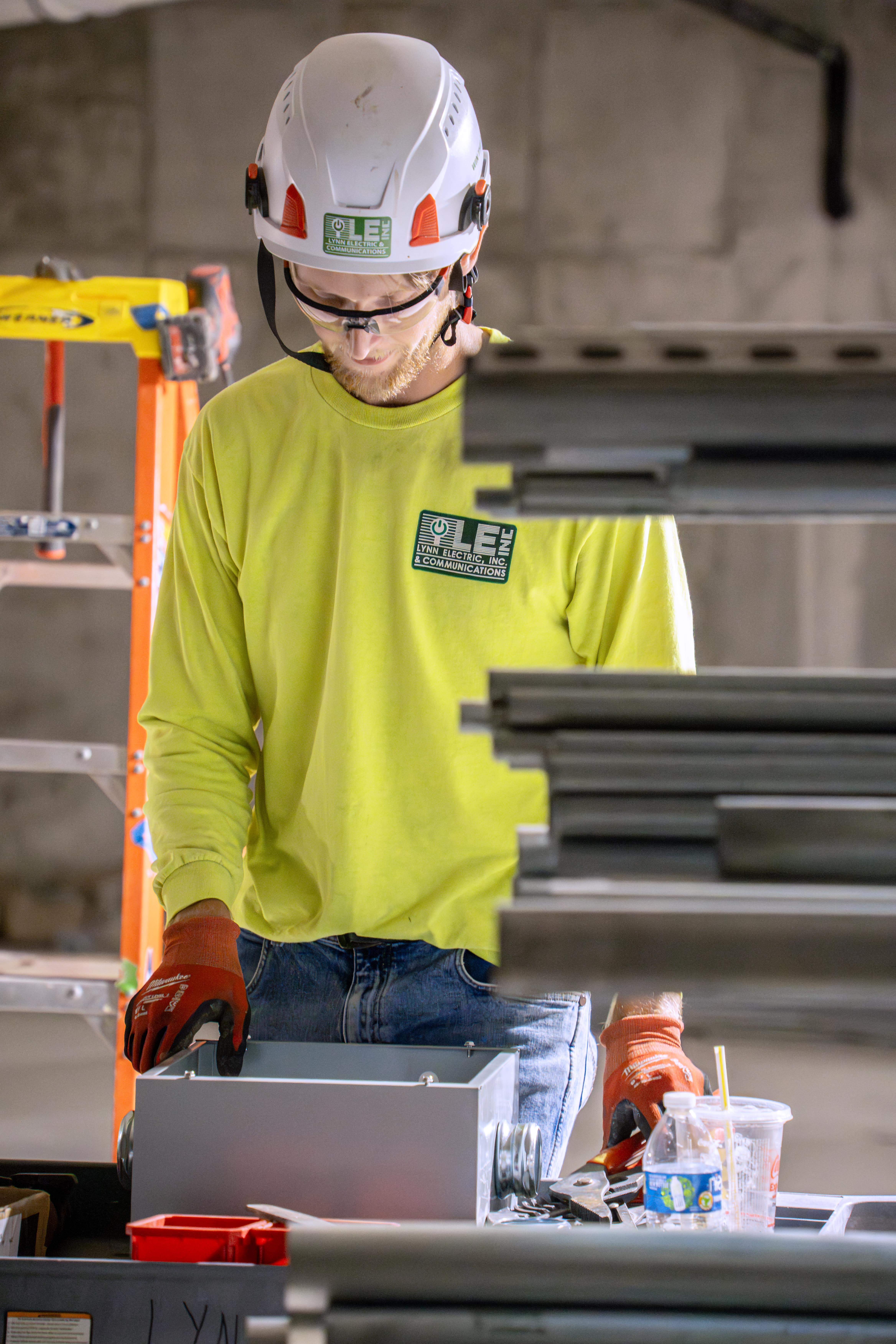-min.jpg)
Why Kansas City Businesses Are Upgrading to Energy-Efficient Lighting in 2025
November 24, 2025
Why Kansas City Businesses Are Upgrading to Energy-Efficient Lighting in 2025
Energy-efficient lighting has quickly become one of the most cost-effective upgrades for Kansas City businesses. As operating expenses rise and sustainability standards tighten, commercial facilities across the metro are replacing outdated fluorescent and HID fixtures with modern LED systems designed for long-term performance, lower energy use, and improved workplace visibility.
This guide explains why the shift is happening, what the benefits are, and how Kansas City companies can make the transition smoothly.
The Push Toward Energy Efficiency in Commercial Buildings
Energy efficiency is now a top priority for building owners, facility managers, and developers. The U.S. Department of Energy reports that LED lighting uses up to 90 percent less energy than traditional systems and can last more than 20 times longer. Commercial buildings account for a significant portion of electricity consumption, and lighting remains one of the biggest contributors.
Source: U.S. Department of Energy (https://www.energy.gov)
Locally, Kansas City is seeing increased interest in sustainable building upgrades as companies look to reduce operating costs and meet evolving environmental standards. Programs like ENERGY STAR provide guidelines for commercial buildings seeking to cut energy use and improve performance.
Source: ENERGY STAR (https://www.energystar.gov)
Key Reasons Businesses Are Upgrading to LED Lighting
1. Lower Monthly Utility Costs
LED fixtures use significantly less energy than legacy systems. For warehouses, retail stores, and offices that operate lighting for extended hours, the savings are substantial. According to the EPA, LEDs can reduce lighting-related electricity consumption by up to 70 percent.
Source: EPA (https://www.epa.gov)
2. Fewer Maintenance Requirements
HID lamps, fluorescents, and outdated fixtures often require frequent replacements or repairs. LEDs can last between 50,000 and 100,000 hours, resulting in fewer disruptions and lower long-term maintenance expenses.
3. Better Light Quality and Workspace Visibility
LED lighting delivers improved color rendering, more consistent brightness, and better control over light distribution. This is especially important for:
- Manufacturing facilities
- Warehouses
- Commercial offices
- Retail stores
- Medical and research environments
Better lighting improves safety, employee productivity, and overall aesthetics.
4. Support for Smart Building Technology
Modern LED systems integrate seamlessly with:
- Motion and occupancy sensors
- Smart switches
- Building automation systems
- Daylight harvesting technology
These integrations allow facilities to reduce waste and optimize lighting performance throughout the day.
5. Rebates and Incentives
Utility companies and government programs often provide rebates for upgrading to efficient lighting systems. Before beginning a project, businesses should explore available incentives through resources like the Database of State Incentives for Renewables & Efficiency (DSIRE).
Source: DSIRE (https://www.dsireusa.org)
Which Kansas City Businesses Are Leading the Transition?
Across the metro, lighting upgrades are common in:
- Office buildings
- Industrial and manufacturing facilities
- Retail centers
- Healthcare campuses
- Educational facilities
- Distribution and logistics warehouses
Many property managers are also upgrading during tenant finish projects to reduce long-term operating expenses and meet safety standards.
How Lynn Electric Helps Kansas City Companies Make the Switch
Lynn Electric provides full-service commercial lighting upgrades, including:
- On-site lighting assessments
- LED retrofit planning
- Fixture selection and design
- Energy-saving projections
- Smart lighting and control systems
- Installation and commissioning
- Ongoing electrical maintenance
Our technicians handle the entire process, ensuring minimal downtime and a tailored solution that fits the building’s layout and budget.




